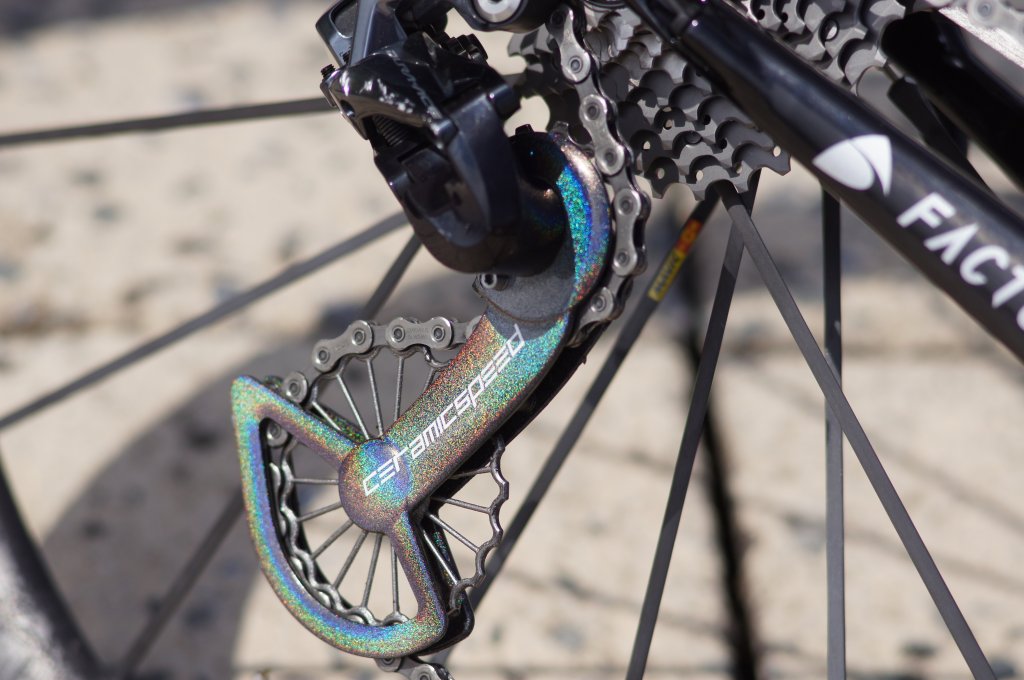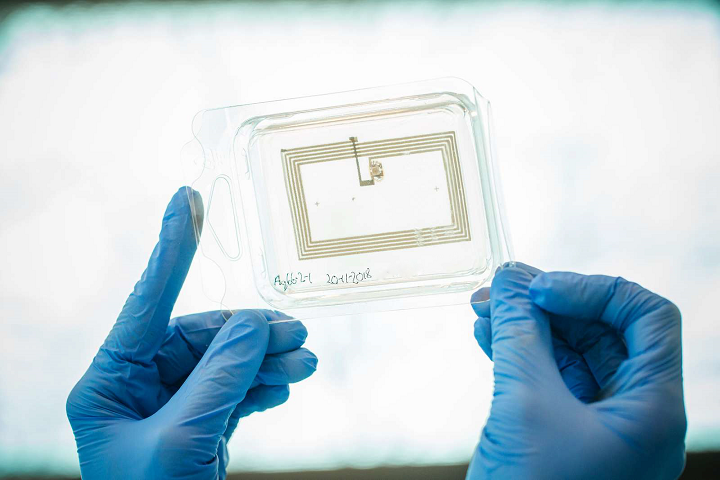Danish Technological Institute creates metal detectable 3D printed parts for food processing
CeramicSpeed partners with DTI to create innovative cycling part using SLM Solutions metal AM
CeramicSpeed Collaborates with DTI for 3D Printed Bike Part
Germany’s SLM Solutions was a major catalyst recently in expanding manufacturing for a specific 3D printed bicycle part designed by CeramicSpeed, a Danish cycling company working in cooperation with selective laser melting experts Danish Technological Institute. Partnering to improve performance in cycling, the innovators worked together to create a durable titanium pulley wheel.
Testing this new part in this year’s Tour de France, the group of innovators found that the part was both road- and race-worthy. This is not CeramicSpeed’s first revolutionary part, however, as they continue to make a difference in professional cycling with components like ceramic bearings. In working with DTI, they can produce their parts on either a quad-laser SLM®500 or twin SLM®280 system.
“3D printing technology has given us a lot of leeway to experiment creatively with design, while at the same time being able to optimize a product’s function,” Carsten Ebbesen, R&D Manager at CeramicSpeed stated. “The collaboration with DTI has led us to develop and produce gears in a radically new design form that is only possible with 3D printing.”
All the classic benefits of 3D printing can be put to use in fabrication of bicycles and bicycle parts, not only because of affordability and speed in production, but also the ability to produce extremely lightweight components—some of which may not have been possible before, as in the creation of the pulleys, made with 17 spokes, a 2 mm diameter, and a wall thickness of only 0.4 mm. The developers state that with the hollow design, they have even been able to reduce the sprocket weight to 8.4 grams.
“The hollow geometry of the objects cannot be produced with conventional methods, and the 3D printing in combination with subsequent specialized processes leads to a unique innovative product,” said Thor Bramsen, Industrialization Manager at the Danish Technological Institute.
The new gears produced in this project have passed rigorous testing also, proving their quality—along with offering great durability, corrosion resistance, and low-density strength. Wear is a central focus as the pulley wheels are attached to the outer gears. Titanium was chosen as the ultimate material for these complex structures due to its mechanical properties.
Quality parts are built in serial production at DTI, as a result of a coordinated process chain relying on SLM Solutions AM hardware, which included remaining true to the client’s design, adding material for areas in need of CNC machining, and both optimizing support and minimizing the wall diameter and weight. DTI was put to the test during the project, with their team using their entire range of manufacturing knowledge from the beginning—and ending only at the time of delivery.
As a supplier and partner in metal AM manufacturing, SLM Solutions offers a vested interest in customers’ long-term success with metal additive manufacturing. A publicly traded company, SLM Solutions Group AG is headquartered in Germany with offices in France, Italy, the United States, Singapore, Russia, India and China.
As 3D printing makes an impact in nearly every industry today, bikes are no exception, and especially as users are availed of the ability to make their own modifications with frame components, 3D printed airless tires, and even entirely 3D printed bicycle bridges. What do you think of this news? Let us know your thoughts! Join the discussion of this and other 3D printing topics at 3DPrintBoard.com.
[Source / Images: SLM Solutions]
The post CeramicSpeed Collaborates with DTI for 3D Printed Bike Part appeared first on 3DPrint.com | The Voice of 3D Printing / Additive Manufacturing.
European Innovation Hub and Test Bed to Focus on Developing and Implementing 3D Printed Electronics
More and more, we are using special industrial 3D printers, with inkjet and aerosol jet technology, to embed conductive components within our intelligent products in what we call 3D printed electronics. Items like ECG electrodes and contactless payment cards use these embedded components to perform wireless activities and readings, like measuring the frequency of a person’s heart beats and paying for something at the store. The technology makes it possible to 3D print conductive circuits on nearly any surface imaginable, and the market for it is estimated at $32 billion outside Europe alone. Now, the continent is working to play catch-up.
In a move to increase Europe’s competitiveness in this field, and further prepare for Industry 4.0, the European Union’s Horizon 2020 has granted €10.6 million in funding to a new European innovation hub, led by the Danish Technological Institute (DTI), that will focus on 3D printed electronics.
“Printed electronics opens up a whole world of new opportunities, as complex constructions can be embedded just like using 3D printing, at prices able to compete with mass-produced goods,” said Zachary James Davis, DTI’s Project Coordinator for the hub. “Quite simply because electronics can be produced from CAD drawings and printed on flexible materials, as already used in architecture and 3D print.”
DTI researchers have been working with 3D printed electronics since 2016. This work, coupled with its efforts in encouraging the adoption of 3D printing, is what makes the university the perfect leader for the new hub as it works to help Europe’s manufacturing industry gain a strong position. Together with 16 RTOs and businesses, such as Fraunhofer, Eindhoven University of Technology, RISE, and Axia, DTI will develop an open innovation test bed, or LEE-BED, which will function as the hub and focus on 3D printed electronics.
Enterprises that apply to join LEE-BED will have their businesses cases evaluated first. If they are selected to participate, they will receive access to RTOs which most closely match their personal requirements. In addition, the chosen enterprises will also have access to expertise and equipment from designated RTOs in order to support their own 3D printing electronics development efforts, with no financial risk, all the way from the prototyping phase up to pilot production and full-scale manufacturing.
Davis explained, “All the partners in LEE BED will provide their various skills and facilities within printed electronics to enterprises that want to integrate and embed electronics into their products.
“Enterprises will be able to prove the viability of new technologies without major investment and financial risk during the all-important initial phase. We have already started working with jewellery giant Swarovski, looking into the idea of intelligent light in their crystals that can be integrated with clothing and home interiors.”
In addition to Swarovski, LEE-BED also has three other industrial cases with European companies: Acciona, Grafietic, and Maier.
LEE-BED is made up of three phases:
- Technological & economic modeling, including lifecycle analysis, patent research and safety/legislation audit
- The pilot project using current, and upgraded, pilot lines for nanomaterials, nano-enabled formulations, and 2D/3D printing of components
- Knowledge transfer, to include evaluation of intellectual property rights (IPR) and patents, investment possibilities, and standards/safety screening
The purpose of LEE-BED is to spread awareness about 3D printed electronics, and develop and implement them across Europe in order to “break down barriers” for the technology to be used. The goal is to keep the European manufacturing industry in the EU, as opposed to outsourcing high-tech projects elsewhere.
Discuss this and other 3D printing topics at 3DPrintBoard.com or share your thoughts in the Facebook comments below.
[Images provided by Danish Technological Institute]






